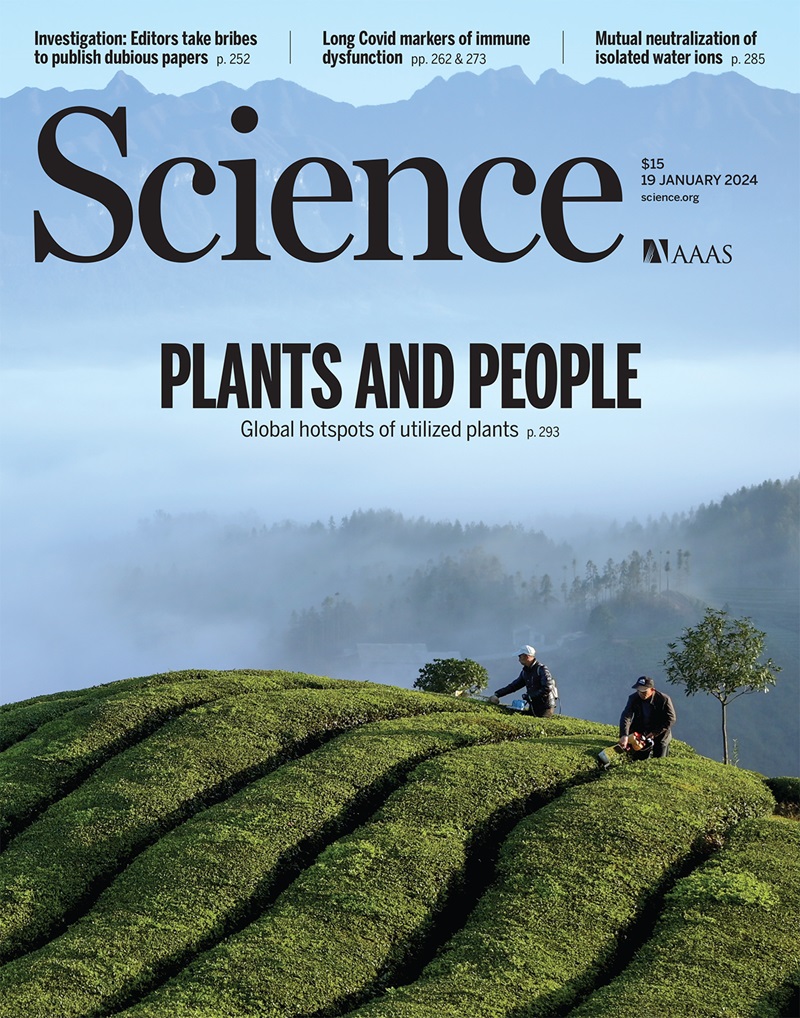通过骨架编辑弥合吡啶-吡啶合成间隙
IF 45.8
1区 综合性期刊
Q1 MULTIDISCIPLINARY SCIENCES
引用次数: 0
摘要
由单个本构环原子不同的杂环对在其制备中可以表现出明显的反合成断开。这种合成间隙以吡啶和吡啶为例。吡啶(一种六元C5N环)在发现化学中日益突出,其易于组装刺激了进一步的合成发展。尽管有许多有利的性质,吡嗪(类似于C4N2环)相对落后,这一差异归因于它的制备往往具有挑战性,这是由电子不和谐的杂原子排列引起的。在这项工作中,我们实现了一个单原子骨架编辑,通过直接碳到氮原子的取代,从吡啶产生吡啶:在邻位上引入叠氮化物,使n-氨基-2-叠氮吡啶阳离子的光引发重排成为可能。这种转化将两个杂环连接起来,使得吡啶反合成的丰富性成为吡啶嘧啶可利用的。本文章由计算机程序翻译,如有差异,请以英文原文为准。
Bridging the pyridine-pyridazine synthesis gap by skeletal editing
Pairs of heterocycles differing by a single constitutive ring atom can exhibit stark differences in the retrosynthetic disconnections available for their preparation. Such a synthesis gap is exemplified by pyridine and pyridazine. Pyridine (a six-membered C5N ring) has risen to prominence in discovery chemistry, its ease of assembly spurring further synthetic development. Despite a host of favorable properties, pyridazine (an analogous C4N2 ring) has comparatively lagged behind—a discrepancy attributable to its often-challenging preparation, which arises from an electronically dissonant heteroatom arrangement. In this work, we achieve a single-atom skeletal edit that produces pyridazines from pyridines by direct carbon-to-nitrogen atom replacement: Azide introduction at the ortho position enables a photoinitiated rearrangement of N-amino-2-azidopyridinium cations. This transformation links the two heterocycles such that the richness of pyridine retrosynthesis becomes available to pyridazines.
求助全文
通过发布文献求助,成功后即可免费获取论文全文。
去求助
来源期刊

Science
综合性期刊-综合性期刊
CiteScore
61.10
自引率
0.90%
发文量
0
审稿时长
2.1 months
期刊介绍:
Science is a leading outlet for scientific news, commentary, and cutting-edge research. Through its print and online incarnations, Science reaches an estimated worldwide readership of more than one million. Science’s authorship is global too, and its articles consistently rank among the world's most cited research.
Science serves as a forum for discussion of important issues related to the advancement of science by publishing material on which a consensus has been reached as well as including the presentation of minority or conflicting points of view. Accordingly, all articles published in Science—including editorials, news and comment, and book reviews—are signed and reflect the individual views of the authors and not official points of view adopted by AAAS or the institutions with which the authors are affiliated.
Science seeks to publish those papers that are most influential in their fields or across fields and that will significantly advance scientific understanding. Selected papers should present novel and broadly important data, syntheses, or concepts. They should merit recognition by the wider scientific community and general public provided by publication in Science, beyond that provided by specialty journals. Science welcomes submissions from all fields of science and from any source. The editors are committed to the prompt evaluation and publication of submitted papers while upholding high standards that support reproducibility of published research. Science is published weekly; selected papers are published online ahead of print.
 求助内容:
求助内容: 应助结果提醒方式:
应助结果提醒方式:


